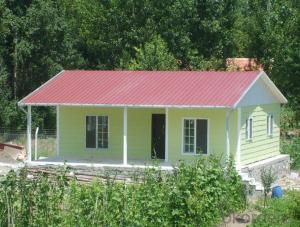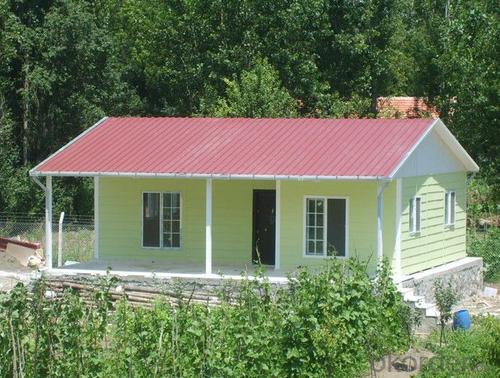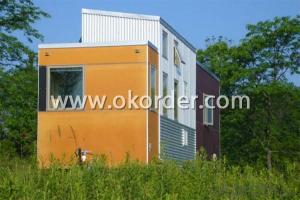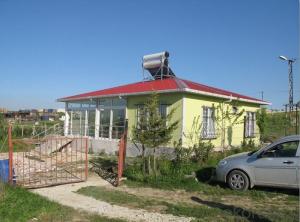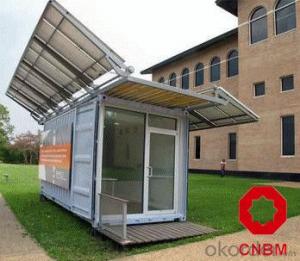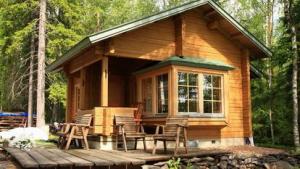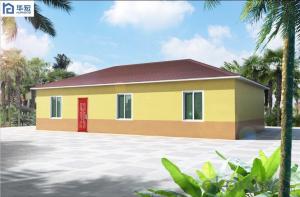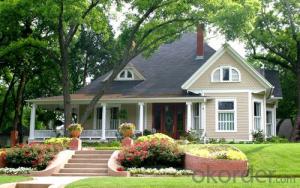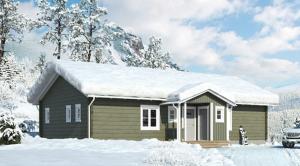Good Quality Mobile House Made in China
- Loading Port:
- China Main Port
- Payment Terms:
- TT OR LC
- Min Order Qty:
- -
- Supply Capability:
- -
OKorder Service Pledge
OKorder Financial Service
You Might Also Like
prefabricated steel building Feature:
* Prefabrication, easy to install and disassemble
* Precision works, long life-span up to 15 years for use
* Lightness, easy to transport and relocate
* Using several times and recycling, economy and environment friendly
Prefab house Main material list as following:
Wall: 50mm/75mm thick EPS/Rockwool/PU sandwich panel
Roof: 50mm/75mm thick EPS/Rockwool/PU corrugated sandwich panel
Window: UPVC or Aluminum sliding window
Door: aluminum frame with panel same as wall panels(security door as optional)
Prefab house Joint material: steel column/aluminum alloy
1. Free from the damages by inspects, such as white ants and so on
2. Steel code: Q345, Q235
3. Designed life span: more than 30 years;
4. Green and environment-friendly materials used;
5. Seismic resistance up to 8 magnitudes
6. Safe---Able to stands for maximum 55 m/s typhoon
7. Advanced roof and wall cladding material guarantee excellent acoustic insulation, less 65% energy consumption than the concrete structure.
8. Additional 10%-15% net area compared to the traditional building, air cavity between the cladding and main structure guarantees the comfortable indoor space.
Prefab house advantage
1. Easy and quick to install;
2. Excellent load and span capabilities;
3. Significant savings in site installation costs;
4. Panel comes in a range of aesthetically pleasuring colors;
5. Energy saving thermal insulation;
6. Superior air tightness for controlled environments;
7. Good reactions to fire properties;
8. Durable, long lasting, stood the test of time in the extremes of harsh climate
- Q: Can container houses be built with a garage or carport?
- Certainly, it is possible to construct container houses with a garage or carport. The modular characteristic of shipping containers enables simple customization and the incorporation of diverse structures. Numerous container house designs incorporate a garage or carport into the overall layout. Depending on the homeowner's preferences and space availability, these structures can either be connected to or separate from the main living area. Opting to build a garage or carport using shipping containers presents numerous advantages, including affordability, resilience, and eco-friendliness, thereby making it a favored choice among enthusiasts of container houses.
- Q: Are container houses easy to assemble?
- Yes, container houses are generally considered easy to assemble. One of the main reasons for this is that they are prefabricated structures, meaning that the components are manufactured off-site and then transported to the location where the house will be assembled. This process eliminates the need for extensive on-site construction, reducing the time and effort required for assembly. Container houses also offer a modular design, with the ability to stack and connect multiple containers to create larger living spaces. This modular approach simplifies the assembly process as each container can be easily fitted together like building blocks. Additionally, containers are built to standard sizes, which ensures that they can be easily transported and assembled using commonly available equipment. Furthermore, container houses typically come with detailed assembly instructions and are designed to be user-friendly. Many manufacturers provide easy-to-follow step-by-step guides that help homeowners or builders assemble the house without the need for specialized skills or experience in construction. In some cases, professionals may be required for specific tasks such as plumbing or electrical work, but overall, the assembly process is relatively straightforward. It is important to note that the ease of assembly may vary depending on the complexity of the design and the specific requirements of the project. Factors such as site preparation, foundation work, and customization options can also impact the overall assembly process. However, compared to traditional construction methods, container houses are generally considered to be much easier and quicker to assemble.
- Q: Can container houses be designed with sustainable materials?
- Yes, container houses can definitely be designed with sustainable materials. Container houses are constructed using shipping containers, which are made of durable materials like steel. However, in order to make them more sustainable, various modifications can be made. Firstly, sustainable insulation materials can be used to improve energy efficiency and reduce the need for excessive heating or cooling. This can include materials like recycled denim, cellulose insulation, or natural fiber insulation. These options not only provide effective insulation but also reduce the carbon footprint associated with the construction process. Secondly, sustainable flooring options can be used, such as bamboo or cork, which are renewable and have a lower impact on the environment compared to traditional flooring materials. Additionally, reclaimed or recycled wood can be used for interior finishes, reducing the demand for new timber. Furthermore, sustainable roofing materials like solar panels or green roofs can be incorporated into container house designs. Solar panels can generate renewable energy, reducing the reliance on non-renewable sources. Green roofs, on the other hand, can provide natural insulation, reduce stormwater runoff, and create a habitat for plants and wildlife. Lastly, the use of low VOC (volatile organic compounds) paints and adhesives can contribute to a healthier indoor environment by minimizing the release of harmful chemicals into the air. Overall, container houses can be designed with sustainable materials, making them more environmentally friendly and contributing to a more sustainable future.
- Q: Are container houses suitable for pet shelters?
- Yes, container houses can be suitable for pet shelters. They provide a cost-effective and easily customizable solution for housing animals. Containers can be modified to create separate spaces for different animals, with proper insulation, ventilation, and access to natural light. Additionally, container houses are durable and can withstand various weather conditions, ensuring the safety and comfort of the animals.
- Q: Can container houses be converted into offices or studios?
- Indeed, container houses have the potential to be transformed into offices or studios without a doubt. The adaptability and modular characteristics of container houses render them suitable for repurposing into various types of spaces, notably offices and studios. They offer a cost-effective and eco-friendly alternative to conventional construction methods, as containers are easily accessible and can be readily personalized to suit specific requirements. To convert container houses into comfortable and functional workspaces, one can incorporate insulation, windows, doors, and appropriate ventilation systems. The interior can be tailored to include separate rooms or open plan layouts, depending on the specific needs of the office or studio. Moreover, containers can be stacked or joined together to create larger spaces or multi-level structures, thus allowing for expansion and flexibility. The robust and secure nature of container houses also renders them suitable for office or studio environments. They are constructed to endure harsh weather conditions, ensuring the safety and protection of the occupants and their equipment. Additionally, container houses can be equipped with essential amenities such as electricity, plumbing, and internet connectivity, making them fully functional workspaces. The conversion of container houses into offices or studios not only offers a distinctive and visually appealing environment but also contributes to sustainable practices. By repurposing shipping containers, we reduce the demand for new construction materials and minimize waste. It serves as an innovative and environmentally conscious solution for creating contemporary, efficient, and adaptable workspaces.
- Q: What kind of house to be a villa?
- can also be translated into" manor "," castle ", a poetic house .In fact, the current domestic real estate market sales of most of the" villa "is not Villa, but HOUSE.
- Q: Are container houses eco-friendly?
- There are multiple reasons why container houses can be considered eco-friendly. Firstly, they are built using repurposed shipping containers, which reduces the need for traditional construction materials like bricks, concrete, and wood. By reusing these containers, we effectively decrease the demand for new raw materials and minimize the environmental impact associated with their extraction and production. Secondly, container houses have a smaller carbon footprint compared to traditional homes. The manufacturing process of shipping containers results in significantly fewer greenhouse gas emissions compared to the production of bricks and concrete. Moreover, container houses often require less energy for heating and cooling due to their compact size and efficient insulation, leading to lower energy consumption and reduced carbon emissions. Furthermore, container houses can be designed with energy efficiency in mind. They can be equipped with solar panels to generate renewable energy, rainwater harvesting systems to decrease water consumption, and green roofs or living walls to enhance insulation and support biodiversity. In addition, container houses are easily transportable, providing greater flexibility and minimizing the need for new construction. This mobility can assist in reducing urban sprawl and preserving natural habitats by enabling people to reside in existing developed areas. However, it is vital to note that the eco-friendliness of a container house also depends on various factors, including the materials used for insulation, the energy sources for heating and cooling, and the overall design and construction practices. It is crucial to prioritize sustainable and environmentally friendly choices throughout the entire construction process to ensure the eco-friendliness of container houses.
- Q: What is the relationship between logistics and warehousing?
- Warehousing is not a production, not a transaction, but for the production and trading services in a logistics activities
- Q: Can container houses be expanded in the future?
- Yes, container houses can be expanded in the future. The modular design of container houses allows for easy expansion by adding additional containers or sections to increase living space. The flexibility and adaptability of container houses make them an ideal option for future expansion or modification as per the owner's needs.
- Q: Can container houses be designed to have a built-in storage space?
- Yes, container houses can be designed to have a built-in storage space. The modular nature of shipping containers allows for customization and the addition of storage solutions such as shelves, cabinets, and built-in closets.
Send your message to us
Good Quality Mobile House Made in China
- Loading Port:
- China Main Port
- Payment Terms:
- TT OR LC
- Min Order Qty:
- -
- Supply Capability:
- -
OKorder Service Pledge
OKorder Financial Service
Similar products
Hot products
Hot Searches
